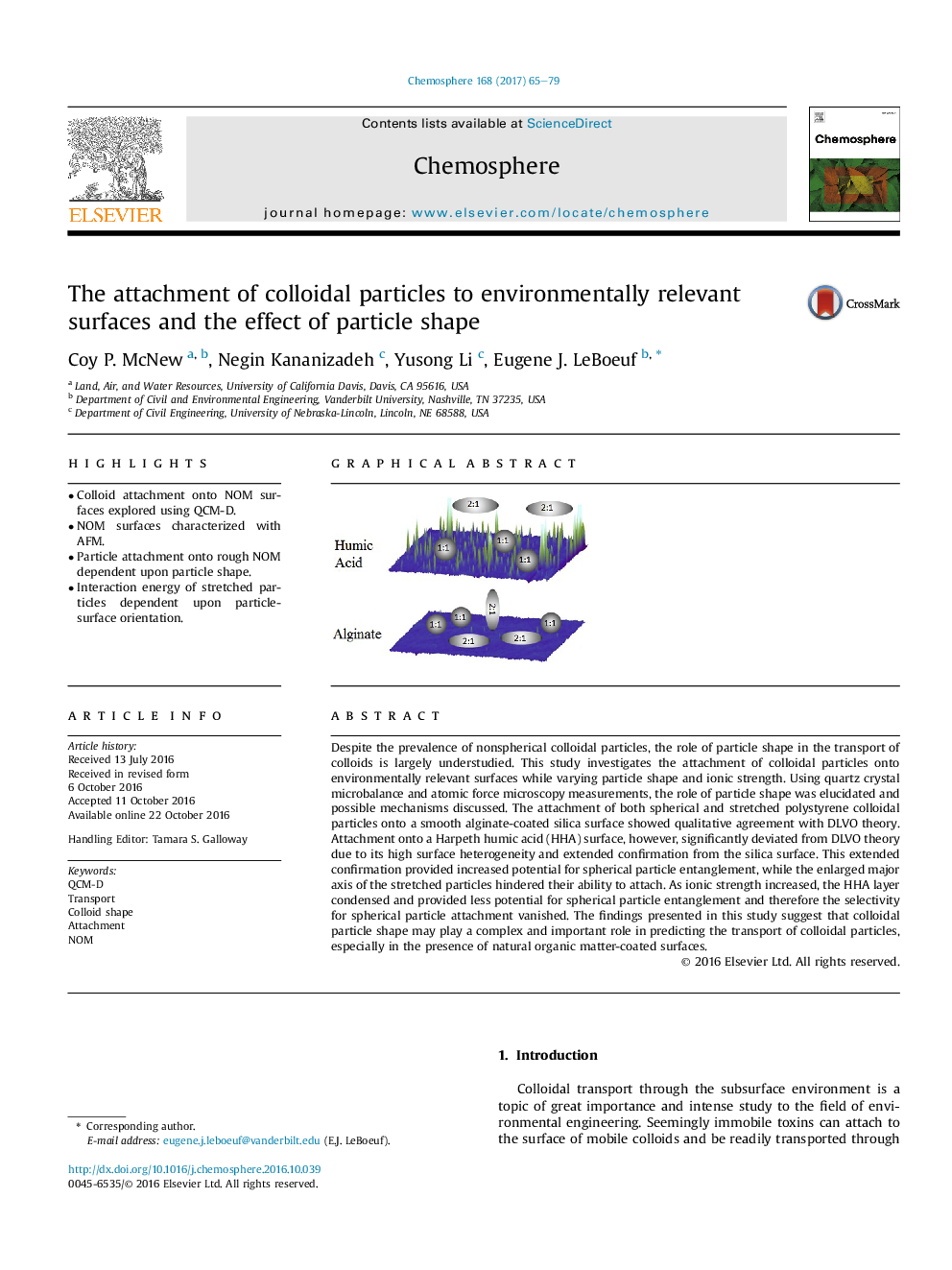| Article ID | Journal | Published Year | Pages | File Type |
|---|---|---|---|---|
| 5746583 | Chemosphere | 2017 | 15 Pages |
â¢Colloid attachment onto NOM surfaces explored using QCM-D.â¢NOM surfaces characterized with AFM.â¢Particle attachment onto rough NOM dependent upon particle shape.â¢Interaction energy of stretched particles dependent upon particle-surface orientation.
Despite the prevalence of nonspherical colloidal particles, the role of particle shape in the transport of colloids is largely understudied. This study investigates the attachment of colloidal particles onto environmentally relevant surfaces while varying particle shape and ionic strength. Using quartz crystal microbalance and atomic force microscopy measurements, the role of particle shape was elucidated and possible mechanisms discussed. The attachment of both spherical and stretched polystyrene colloidal particles onto a smooth alginate-coated silica surface showed qualitative agreement with DLVO theory. Attachment onto a Harpeth humic acid (HHA) surface, however, significantly deviated from DLVO theory due to its high surface heterogeneity and extended confirmation from the silica surface. This extended confirmation provided increased potential for spherical particle entanglement, while the enlarged major axis of the stretched particles hindered their ability to attach. As ionic strength increased, the HHA layer condensed and provided less potential for spherical particle entanglement and therefore the selectivity for spherical particle attachment vanished. The findings presented in this study suggest that colloidal particle shape may play a complex and important role in predicting the transport of colloidal particles, especially in the presence of natural organic matter-coated surfaces.
Graphical abstractDownload high-res image (205KB)Download full-size image
